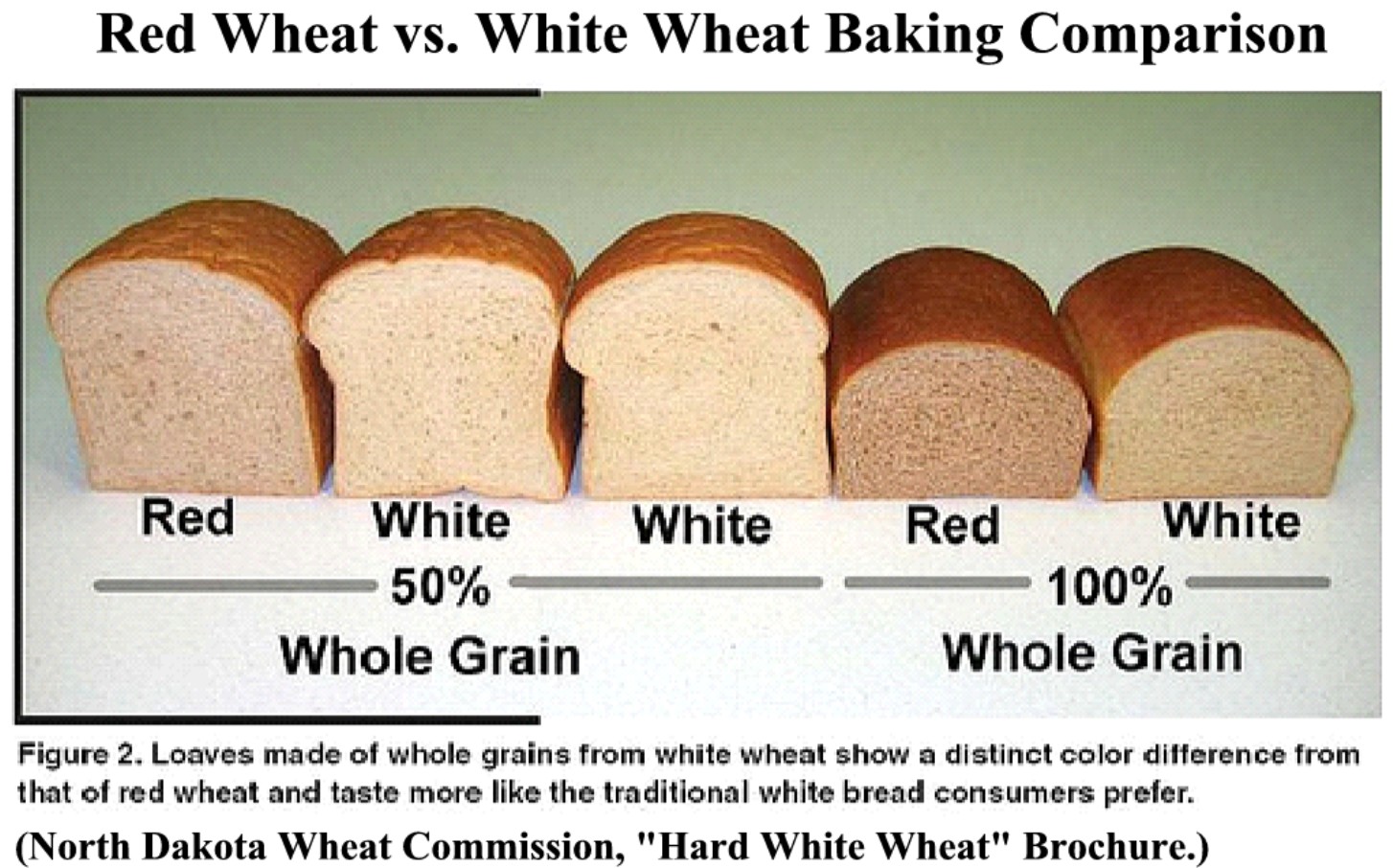WHEAT
Wheat is one of the oldest and most basic food of all time and has for centuries been regarded as the 'staff of life.' It is wisdom to prepare for a time when we might have to rely upon the resources of our own homes, in which case, because of its 'whole food value,' wheat should be the backbone of our storage program. Wise homemakers will therefore learn to use it." (Vernice Rosenvall, Mabel H. Miller, and Dora D. Flack, Wheat for Man Cookbook, p. 6)
BACKGROUND: HARD RED WHEAT VS. HARD WHITE WHEAT
"Hard white wheat was developed from hard red wheat by eliminating the genes for bran color while preserving other desireable characteristics of red wheat. Depending on variety, red wheat has from one to three genes that give the bran its red cast; in contrast, white wheat has no major genes for bran color. The elimination of these genes results in fewer phenolic compounds and tannins in the bran, significantly reducing the bitter taste that some people experience in flour milled from red wheat. Nutritional composition is the same for red and white wheat."
"Spring wheat is planted in April to May, makes a continuous growth and is harvested in August to early September. Winter wheat is planted in the fall. It makes a partial growth, becomes dormant during the cold winter months, resumes growth as the weather warms and is harvested in the early summer (June and July)."
"Flour from hard red winter wheat is often preferred for artisan breads." ( Red Wheat vs. White and Spring Wheat vs. Winter Wheat", www.thefreshloaf.com. )
"Artisan bread flour, which is milled from hard red winter wheat, resembles French bread flour in its characteristics, that is, it is relatively low in protein (11.5–12.5 percent). The low protein content provides for a crisper crust and a crumb with desirable irregular holes...Artisan bread flour often has a slightly higher ash content than patent flour. This creates a grayish cast on the flour and is thought to improve yeast fermentation and flavor." (Paula I Figoni, How Baking Works)

Hard Red Wheat |

Hard White Wheat |
To see a baking test comparison of Hard Red Winter Wheat vs. Hard Spring White Wheat go here.
I really like this image from this baking test comparison which shows you the diffences in bread consistancy used 50% Red/White Hard Wheat vs. 100% Red/White Hard Wheat. (North Dakota Wheat Commission, Hard White Wheat):

MANUAL WHEAT GRINDER
We use the "Country Living Grain Mill" to manually grind our wheat. This mill is a fine hand mill that can actually "out grind" many of the electric mills by 10 to 15% and then out grind ALL electric mills by 100% when it really counts! The Country Living Grain Mill will grind virtually all dry grains and legumes, including wheat, corn, beans, peas, amaranth, etc. Here are some more specifications on the Country Living Grain Mill:"
|
Go here to learn more about the Country Living Grain Mill. |

|
ELECTRIC WHEAT GRINDER
We use the "BlendTec Kitchen Mill Wheat Grinder" or "K-Tec" mill to grind our wheat with electricity. This is the first high speed stoneless flour mill small enough to easily store and big enough to do the job. It's a better way to make flour! Instead of stones, this mill uses a computer-balanced Micronetic Chamber to grind grain into flour. Here are more specifications on the BlendTec Kitchen Mill Wheat Grinder:

|
Go here to learn more about the BlendTec Kitchen Mill Wheat Grinder. |
LOAF PANS
|
I like to use the large 12-inch tin loaf pans which equal 1.5 times your standard loaf size. We have a large family so we need a larger loaf! Go here to learn more about the 12-inch size loaf pan. |

|
